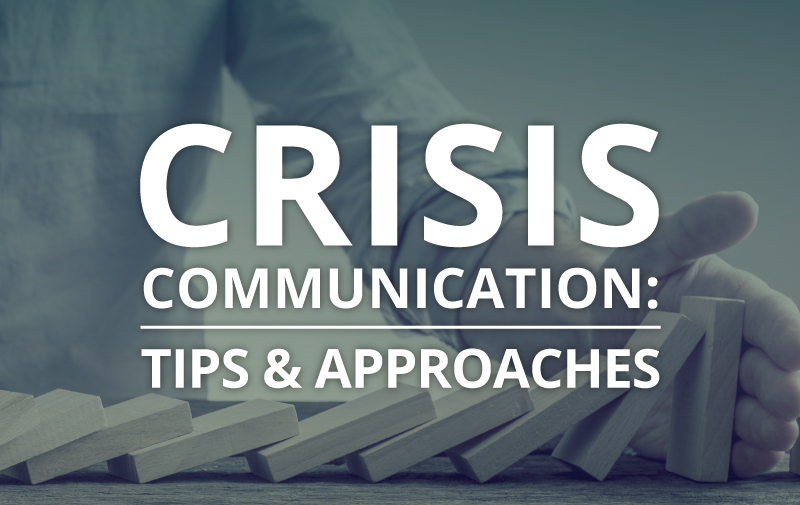Nearly every organization will experience a crisis of some form within its lifetime. Lack of preparation for a crisis may result in an operational break down, confused and angry stakeholders, and an extended period to bring resolution to the issue. As a result, the financial and reputational impact of the crisis may be more severe. Being prepared for a crisis will enable your organization to react and respond immediately and, hopefully, mitigate the fallout.
Below are a few tips on how to prepare for and respond to a crisis.
- Identify a Crisis Communications Team. In anticipation of a future crisis, it is important to be proactive and identify a team of senior executives that will serve as the Crisis Communications Team. Typically, this will be led by the organization’s CEO, with the company’s top public relations executive and legal counsel acting as chief advisers. This team may also include external team members such as outside counsel, outsourced public relations and/or investor relations personnel. Depending on the situation, a firm may choose to alter the team in order to bring in any team leads who have a stake in the situation. For example, a crisis related to employee layoffs would benefit from including the company’s senior human resources representative. The team may also need to include those with special knowledge related to the current crisis.
- Prepare to Engage Experts. During a crisis, you want the best and most experienced people advising you. Depending on the skillset of your in-house PR team and the scope of the crisis, your organization may choose to retain an agency or independent consultant with that specialty. Familiarizing yourself with crisis experts that may be a fit for your organization can lessen the stress of filling this need amid a crisis.
- Identify and Train a Spokesperson. Having more than one voice responding during a crisis can often lead to inconsistent and competing messages. Delegating one point of contact to manage the messaging and responses makes the crisis manageable and your message consistent.
- Pause and Collect. Once a crisis strikes, take a moment to pause and ensure that no one on your team responds or comments on the matter – this includes speaking off the record, on the record, on social media or via a third party. Depending on the circumstance, you may choose to release some type of holding statement to acknowledge the crisis as your team develops a more comprehensive plan of response.
- Gather the Facts. The first step to building a plan is getting an accurate and complete read of the situation. What is the situation? What really happened? What is the exposure to the organization? Who will be impacted by this news? What are the possible issues that are unresolved or ongoing? Answering these questions in the beginning will allow you to respond appropriately to the crisis.
- Identify Affected Stakeholders. Knowing your affected stakeholders is critical to developing key messages and talking points. Who are the internal and external stakeholders that matter to your organization? More specifically, who will be impacted by this crisis? Employees? Shareholders? Clients? The public?
- Develop Key Talking Points. Once you have assessed the facts of the crisis and identified affected stakeholders, your team should develop a comprehensive response that addresses each group of stakeholders. Build a comprehensive list of talking points and plan how to articulate the key messages to each group of stakeholders. Do not share information with one group of stakeholders that you would not want to circulate to another group of stakeholders.
- Post-Crisis Analysis. As soon as the smoke clears, gather your Crisis Communications Team to discuss key learnings. Over time, knowledge, lessons and ideas will be forgotten. A debrief of the experience will allow your organization to leverage key learnings into daily operations and prepare for the next possible crisis.
If you would like to learn more about how to get your crisis communication plan right, contact us today.
Carrie Mendivil, Principal


Leave a Reply